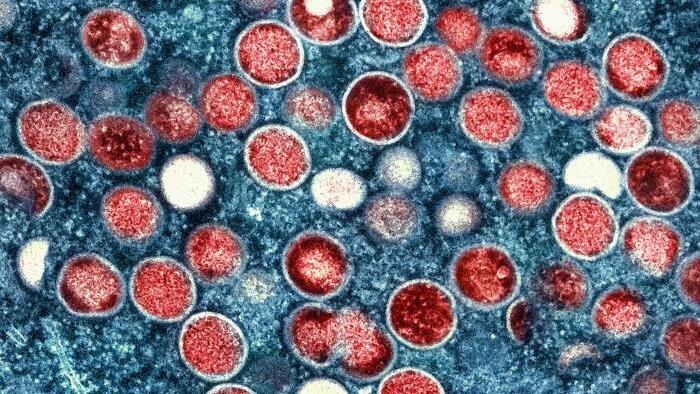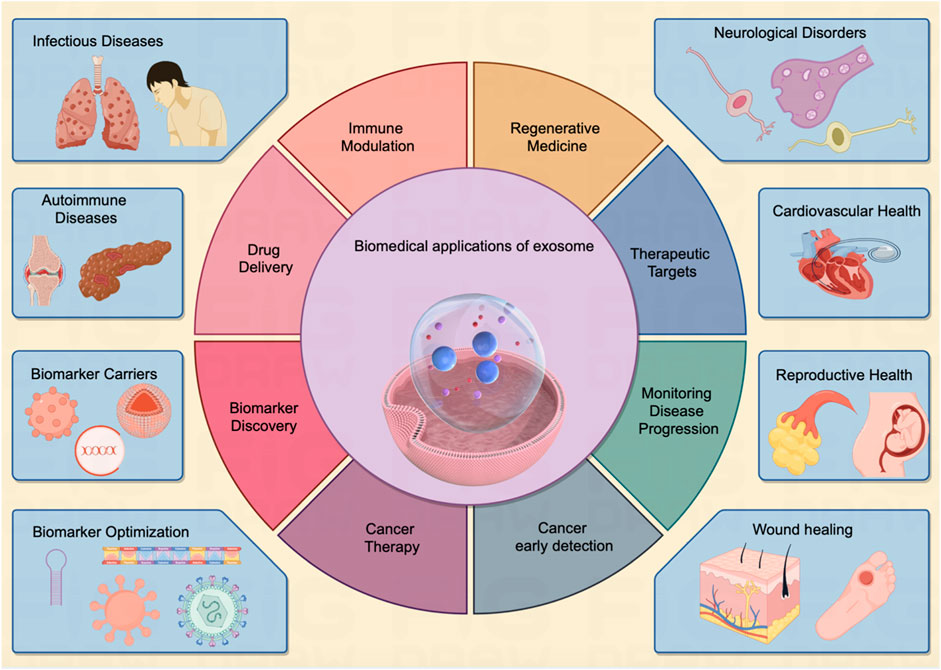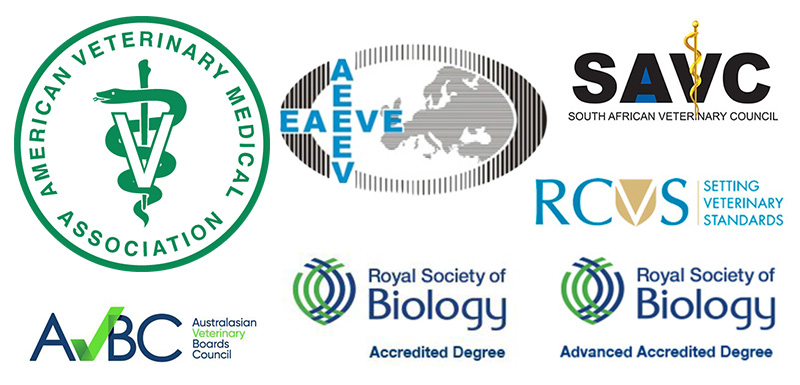Mpox Outbreak Situational Report: A Global Health Challenge Impacting Sustainable Development Goals
This report outlines the current situation of the clade I mpox virus outbreak, focusing on its impact in Central and Eastern Africa and its global implications. The response to this outbreak is critically linked to the achievement of several United Nations Sustainable Development Goals (SDGs), particularly those concerning health, equality, and international cooperation.
Executive Summary
Multiple, concurrent outbreaks of clade I mpox in Central and Eastern Africa represent a significant public health crisis. The situation underscores the urgent need for robust international collaboration to support affected nations, mitigate global spread, and address the deep-rooted health inequalities that exacerbate such crises. Efforts to control the outbreak are intrinsically tied to advancing SDG 3 (Good Health and Well-being), SDG 10 (Reduced Inequalities), and SDG 17 (Partnerships for the Goals).
Outbreak Analysis in Central and Eastern Africa
The epicenter of the current clade I mpox outbreak is the Democratic Republic of the Congo (DRC), with significant transmission also occurring in neighboring countries. This situation poses a direct threat to regional stability and the health of its populations, undermining progress toward SDG 3.
Transmission Dynamics and Community Impact
- Several simultaneous outbreaks are active across the DRC, including in the capital, Kinshasa.
- Clade Ia mpox is spreading in western DRC through multiple vectors: contact with infected wildlife, household transmission in crowded conditions, and sexual contact. This multifaceted transmission highlights the complex socio-economic factors that can hinder public health, impacting SDG 1 (No Poverty) as livelihoods are disrupted.
- Clade Ib mpox, identified in eastern DRC, is primarily spreading through intimate contact among adults, with subsequent transmission within households, affecting vulnerable populations including children. This pattern of spread places a disproportionate caregiving burden on women, touching upon the principles of SDG 5 (Gender Equality).
- The outbreak has extended to neighboring countries, including the Republic of the Congo and the Central African Republic, with evidence of cross-border spread from the DRC.
- Sustained person-to-person transmission has been confirmed through sexual contact, household contact, and within healthcare settings, particularly where personal protective equipment is scarce. This points to systemic weaknesses in health infrastructure, a key challenge for SDG 3.
International Response and Strategic Partnerships (SDG 17)
A coordinated global response is essential to contain the outbreak and strengthen local health systems. The collaboration between international bodies and national governments exemplifies SDG 17 (Partnerships for the Goals) in action, aiming to build resilient health institutions as envisioned in SDG 16 (Peace, Justice and Strong Institutions).
Key Support Activities
- Long-Term Engagement: The U.S. Centers for Disease Control and Prevention (CDC) has supported mpox research and response in the DRC for over two decades.
- On-the-Ground Assistance: U.S. government agencies are actively assisting partners in the DRC and the wider region with a comprehensive response strategy.
- Capacity Building: Support is focused on strengthening disease surveillance, laboratory capacity (including provision of testing materials), workforce training, case management, and infection control.
- Strategic Health Interventions: Collaborative efforts led to the approval and implementation of a vaccination strategy in the DRC, which commenced in October 2024 for high-risk and exposed individuals. This direct health intervention is fundamental to achieving SDG 3.
- Community Engagement: Efforts include risk communication and border health initiatives to manage spread and inform the public effectively.
Global Spread and Health Equity Implications (SDG 10)
The pattern of global mpox cases highlights significant disparities in global health resources and outcomes, a core concern of SDG 10 (Reduced Inequalities). While isolated cases in high-income countries are quickly contained, the sustained outbreak in Africa points to systemic inequities.
Travel-Associated Cases and Containment
- As of July 23, 2025, countries across Africa, Asia, Australia, Europe, and the Americas have reported clade I mpox cases, predominantly in individuals with recent travel to outbreak regions.
- Onward transmission has been limited, with spread contained to close contacts in a few instances, demonstrating the effectiveness of robust public health systems in preventing wider outbreaks.
- The ability of well-resourced health authorities to rapidly isolate cases and conduct contact tracing minimizes public risk and showcases the type of institutional strength needed globally to ensure health security for all under SDG 3.
Public Health Recommendations for Global Health Security
Informed and preventative action by individuals and governments is crucial for global health security. The following recommendations are designed to mitigate the risk of mpox transmission, directly supporting the targets of SDG 3.
CDC Guidance for Travelers
The CDC has issued updated prevention and vaccination recommendations for individuals traveling to countries with active clade I mpox outbreaks. As of July 23, 2025, these countries include:
- Burundi
- Central African Republic
- Democratic Republic of the Congo
- Ethiopia
- Kenya
- Malawi
- Republic of the Congo
- Rwanda
- South Sudan
- Tanzania
- Uganda
- Zambia
Travelers are advised to understand activities that may increase their risk of exposure and to follow official health guidance to protect themselves and their communities.
1. Which SDGs are addressed or connected to the issues highlighted in the article?
-
SDG 3: Good Health and Well-being
- The entire article focuses on the mpox outbreak, a significant public health issue. It discusses the spread of the disease, prevention measures, case management, and international response efforts. This directly relates to ensuring healthy lives and promoting well-being for all at all ages. The article details the situation in Central and Eastern Africa, as well as cases in travelers, highlighting a global health threat.
-
SDG 17: Partnerships for the Goals
- The article explicitly describes international cooperation to combat the mpox outbreak. It states that “CDC and other U.S. government agencies are on the ground in DRC helping partners in the country” and are “working with Ministries of Health and in-country partners across the region.” This collaboration, involving the sharing of resources (testing materials), expertise (workforce capacity, case investigation), and strategy (vaccine use), is a clear example of a global partnership to address a shared challenge.
2. What specific targets under those SDGs can be identified based on the article’s content?
-
Target 3.3: End epidemics of communicable diseases
- This target aims to “end the epidemics of AIDS, tuberculosis, malaria and neglected tropical diseases and combat… other communicable diseases.” The article is entirely focused on the mpox outbreak, a communicable disease. Efforts described, such as disease surveillance, case investigation, vaccination, and risk communication, are all aimed at controlling and ultimately ending the current mpox epidemics in affected regions.
-
Target 3.d: Strengthen capacity for early warning and management of health risks
- This target focuses on strengthening “the capacity of all countries, in particular developing countries, for early warning, risk reduction and management of national and global health risks.” The article details how the CDC is supporting countries like the DRC by helping with “disease surveillance, laboratory capacity including testing materials, strengthening workforce capacity, case investigation, infection prevention and control, border health, and risk communication.” These actions directly build the capacity of these nations to manage the current mpox outbreak and future health risks.
-
Target 17.16: Enhance the Global Partnership for Sustainable Development
- This target calls for enhancing partnerships that “mobilize and share knowledge, expertise, technology and financial resources.” The article provides a concrete example of this through the CDC’s long-term support in the DRC. The U.S. government agencies are sharing expertise (“workforce capacity, case investigation, case management”), technology and resources (“laboratory capacity including testing materials,” “donated laboratory supplies”), and knowledge (“risk communication and community engagement”) to help the DRC and other regional partners combat the mpox outbreak.
3. Are there any indicators mentioned or implied in the article that can be used to measure progress towards the identified targets?
-
Indicators for Target 3.3 (End epidemics)
- Number of mpox cases: The article directly refers to tracking cases, mentioning “several outbreaks happening at the same time in the Democratic Republic of the Congo (DRC), with cases reported throughout the country” and provides a link to a global dashboard for data on confirmed cases. A reduction in the number of new cases would be a primary indicator of progress.
- Geographic spread of the disease: The article tracks the spread from the DRC to “neighboring countries to the east” and in “travelers who’d recently been in areas with clade I outbreaks.” Limiting this spread is an implied measure of success.
-
Indicators for Target 3.d (Strengthen capacity)
- Laboratory testing capacity: The article mentions the provision of “testing materials” and “donated laboratory supplies to be used for mpox testing.” An increase in the number of tests performed or the number of labs equipped to test for mpox would be a measurable indicator.
- Vaccination coverage: The article states that “Vaccinations for people at higher risk for clade I mpox or those who had been exposed to mpox began in October 2024.” The number of people vaccinated is a direct indicator of the implementation of control measures.
- Health workforce capacity: The support for “strengthening workforce capacity” and “case investigation” implies that the number of trained health workers and the effectiveness of contact tracing could be used as indicators.
-
Indicators for Target 17.16 (Enhance partnerships)
- Provision of resources: The article mentions the donation of “laboratory supplies” and “testing materials.” The volume and value of such technical assistance and resources provided by partners like the CDC serve as an indicator of the partnership’s activity.
- Joint strategy development: The fact that “CDC and other U.S. Government agencies worked with DRC to approve and form a strategy for the use of vaccines in-country” is an indicator of a functioning, collaborative partnership.
4. Table of SDGs, Targets, and Indicators
| SDGs | Targets | Indicators |
|---|---|---|
| SDG 3: Good Health and Well-being | 3.3: End the epidemics of… communicable diseases. |
|
| 3.d: Strengthen the capacity of all countries… for early warning, risk reduction and management of national and global health risks. |
|
|
| SDG 17: Partnerships for the Goals | 17.16: Enhance the global partnership… that mobilize and share knowledge, expertise, technology and financial resources. |
|
Source: cdc.gov







